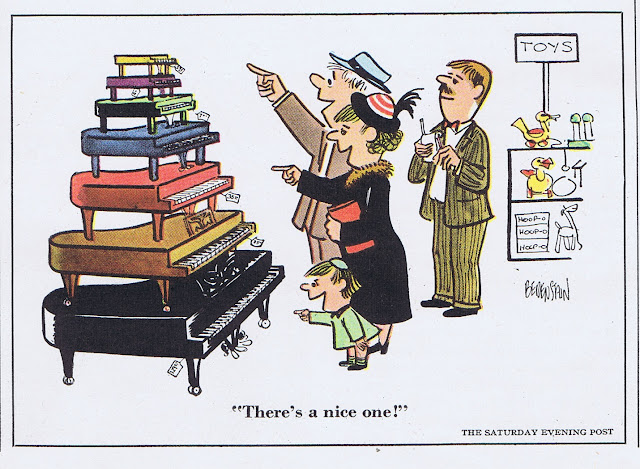Born in Austria in 1898, his home was at his father's hotel in Gmunden. All was quiet until he was six years old. His father suddenly ran off with another woman. Ludwig and his pregnant mother left for Regensberg, Germany. His mother "held me close and wept almost the entire journey from Gmunden to Regensberg."
Ludwig grew up in Germany. He did not fit in. He only spoke French at first. After failing the same grade over and over, he was sent to boarding school. He was not a good student, but the Rothenberg boarding school tended to pass all of their paying students. The family then tried to get him to learn the hotel business from his uncle. Ludwig went, and "showed little promise." He was sent to several of the uncle's hotels, but each time it was the same. Ludwig Bemelmans was not able to do the job. The family gave him an ultimatum: either go into a correctional institution to go to America.
Christmas Eve 1914 he arrived in NYC. He eventually found a home at the
Ritz-Carlton. After two years in the US Army during the Great War, he
returned and worked his way up to assistant manager.
Here's John Bemelmans Marchiano, writing about his grandfather in BEMELMANS: THE LIFE AND ART OF MADELINE'S CREATOR (Viking, 1999):
Ludwig Bemelmans himself picks up the story:
Here's John Bemelmans Marchiano, writing about his grandfather in BEMELMANS: THE LIFE AND ART OF MADELINE'S CREATOR (Viking, 1999):
"During his years at the Ritz, Bemelmans' desire to draw intensified, and the hotel provided many excellent models—kitchen workers and waiters, as well as clientele. Bemelmans dreamed of becoming a cartoonist, a career that he thought would allow him to draw and also earn a good living."
Ludwig Bemelmans himself picks up the story:
"An esteemed guest, who lived at the hotel, was a famous cartoonist. He was known for his generosity in tipping and for never looking at a bill. The entire staff from the maîtres d'hôtel to the chambermaids considered him a "gentleman par excellence." Spurred on by a waiter with whom I worked as a bus boy, I decided to become a cartoonist. By 1926, after years of work and countless disappointments, it seemed as if I had achieved my goal. I sat up in the cupola of the old World building with a group of funnymen: Webster, Milt Gross, Ernie Bushmiller, and Haenigsen. Walter Berndt, who drew 'Smitty' in the Daily News, helped me a great deal. There was constant laughter in that cupola.
"Unfortunately, there were so many complaints about my strip, which was called "Count Bric a Brac," that after six months, during which no syndicate had picked it up, I was fired. It was a bitter time, for I had to go back to the Ritz; and the old cashiers and the maîtres d'hôtel said, 'Ah, Monsieur Bemelmans, who felt himself too good for this dirty trade, is back again. Tiens, tiens [Well, well].'"




























































